I think the answer, or part of it, is as simple as "because it is what was readily available to the common folks".
It's cheap. It's right there in your backyard. It adds spice and flavour to the dish. And when you don't have much, you get inventive.
Vietnamese cuisine is reflective of the Vietnamese lifestyle , from the preparation to how the food is served. Going through long phases of war and political conflict, as well as cultural shifts, the vast majority of the Vietnamese people have been living in poverty. Therefore, the ingredients for Vietnamese food are often very inexpensive but nonetheless, the way they are cooked together to create a yin-yang balance makes the food simple in appearance but rich in flavor.
Due to economic conditions, maximizing the use of ingredients to save money has become a tradition in Vietnamese cooking. In earlier decades and even nowadays in rural areas, every part of a cow is used, from the muscle meat to the intestines; nothing is wasted. The higher quality cuts from farmed animals (cows, pigs) would be cooked in stirfry, soup or other dishes, while the secondary cuts would be used in blood sausages or soup. The same goes for vegetables like scallions: the leafy part is diced into small bits which are used to add flavor to the food while the crunchy stalk and roots are replanted.
- Vietnamese cuisine
Imagine it.
You have a family to feed, probably a big one too, with lots of children. Meat is expensive and hard to come by. Or maybe most commodities are rationed. Rice, flour, cloth, salt, sugar, milk, whatever. You don't have much of anything. You have to make a little go a long way .
So you start looking around for things that you can use. Points if they don't kill you. Bonus points if they taste rather good.
Thanks to the tropical climate, at least you have fresh herbs and vegetables all year round. You can boil them, AND make two dishes: the broth and the steamed veggies, to go with your steamed rice, and maybe some fish.
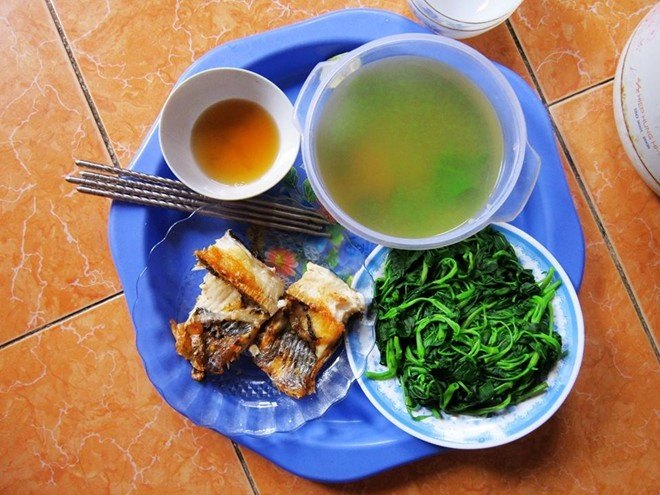
Another pic of the typical poor family's meal:
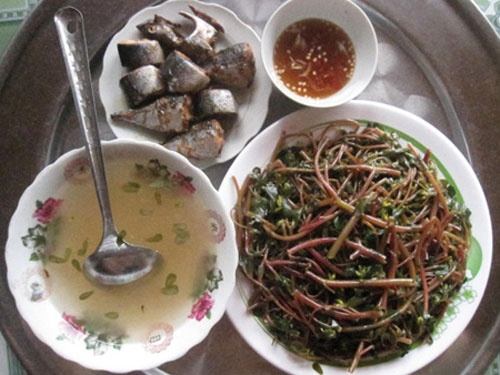
Or
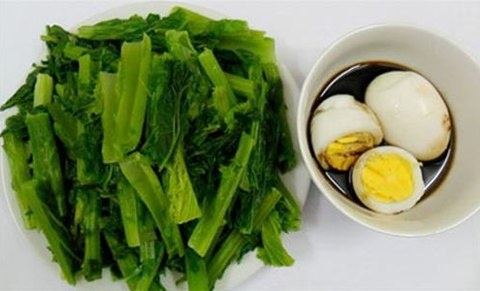
The correlation between what's in a region's cuisine and what's available in its environment is even more easily observed if you compare the Southern Vietnam and the Northern Vietnam. The North has a colder climate and less fertile soil, which means that spices, fruits, herbs, and fresh vegetables are not as readily available as in the South. You will notice that the foods in the North are also less, well, bold. Not as sweet, not as salty, not as spicy. It's a bit more bland.
(I remember my first visit to the North, years ago, and how bewildering the blandness tasted to me. You keep expecting this burst of flavours and this rainbow of colours in your bowl, yet there is none. I didn't stay for long enough to appreciate the taste of the Northern cuisine, and I wouldn't be surprised if my friends who were born and raised there thought that my Southern food was also odd. We think of anything that's unfamiliar to us as strange and incorrectly done.)
Herbs are also served fresh, on its own , so you can add as much or as little as you like - a "choose your own adventure" reinvention of every mouthful. They are aromatic, colourful, they make every dish fun. As one writer once said, the fresh herbs are integral to the layering of flavors in Vietnamese cuisine, as well as the "have it your way" Vietnamese dining philosophy.
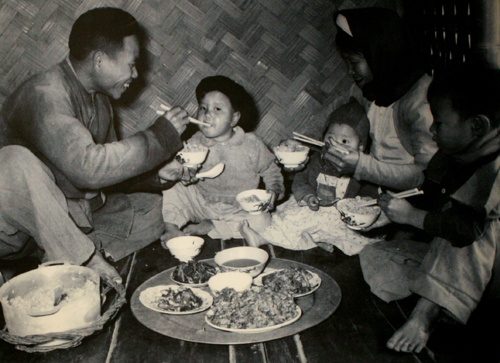
Traditionally, meal time means time with family
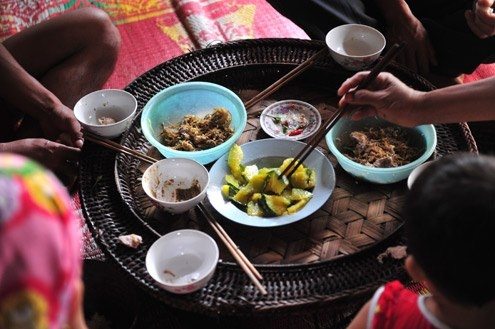
Additionally, rural Vietnam is also heavily influenced by the "food as medicine" school of thinking . Edible plants and herbs are (or were) used widely for medical as well as dietary purposes. Food, feed or medicine: The multiple functions of edible wild plants in Vietnam

